For decades it has been widely accepted that rising CO2 is responsible for radiatively cooling the air above the troposphere to space…even where space is warming.
It’s considered common knowledge that CO2 molecules radiatively warm the tropospheres (~0-12 km) of planets like Earth, Mars, and Venus (Sharma and Wintersteiner, 1990), but they otherwise radiatively cool the stratosphere, mesosphere, and thermosphere (~30 to 700 km) – most of the atmosphere – in the 15 μm band (Dickinson et al., 1987).
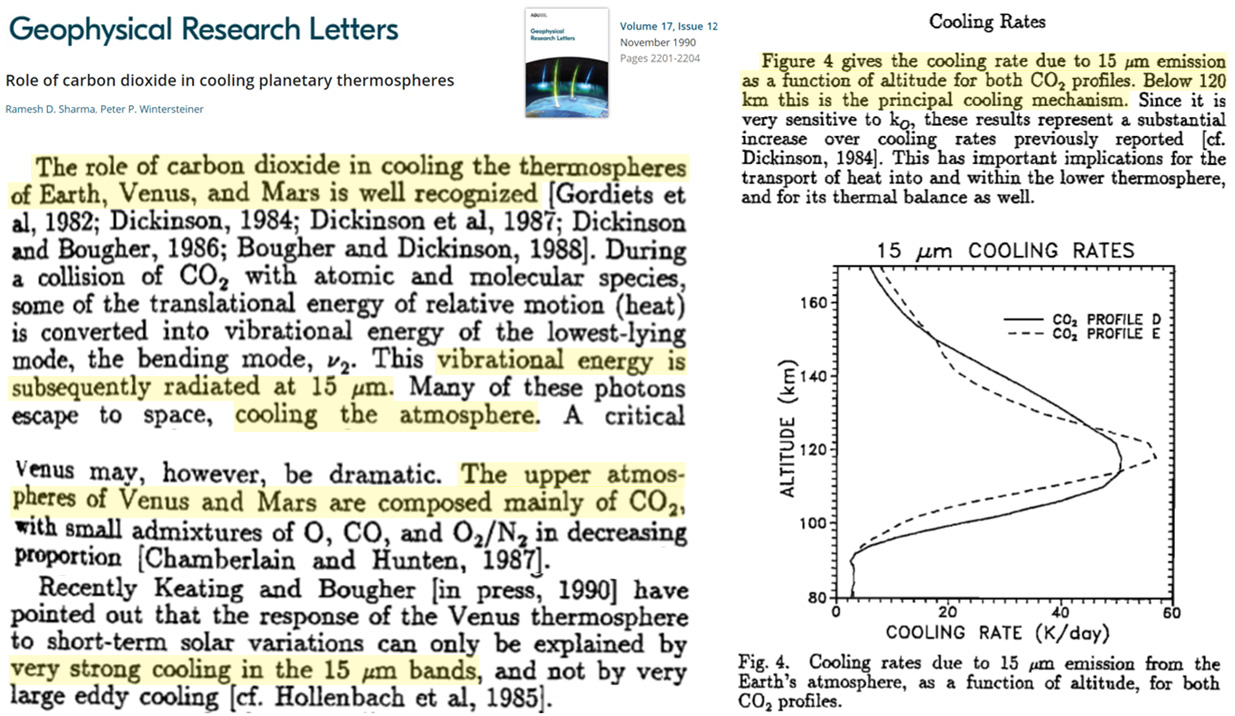
Image Source: Sharma and Wintersteiner, 1990
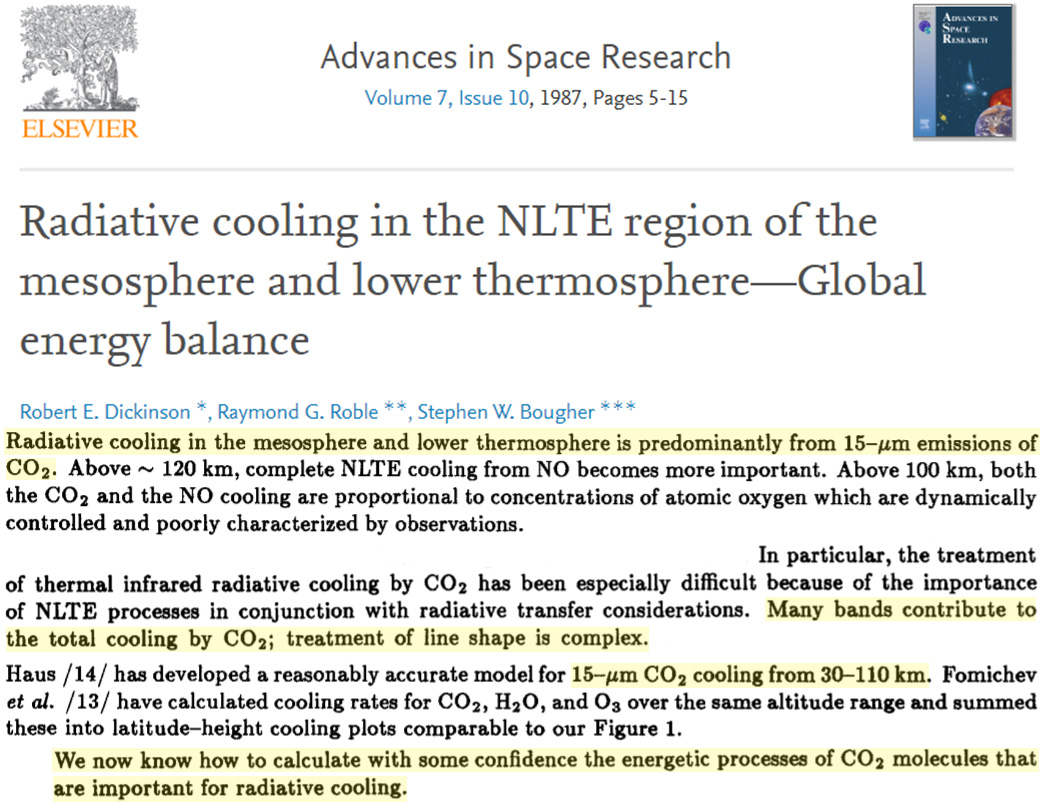
Image Source: Dickinson et al., 1987
No warming for doubled CO2 in the troposphere
A 1981 paper quantified the effect that doubling CO2 has on the first 14 km above the surface and found that there was no CO2-warming effect at these levels of the troposphere. Temperatures were identical at both 330 and 660 ppm (see chart on the left). Above 30 km, however, CO2 was said to cause about 10°C cooler temperatures as the concentration changed from 330 to 660 ppm (top right chart).
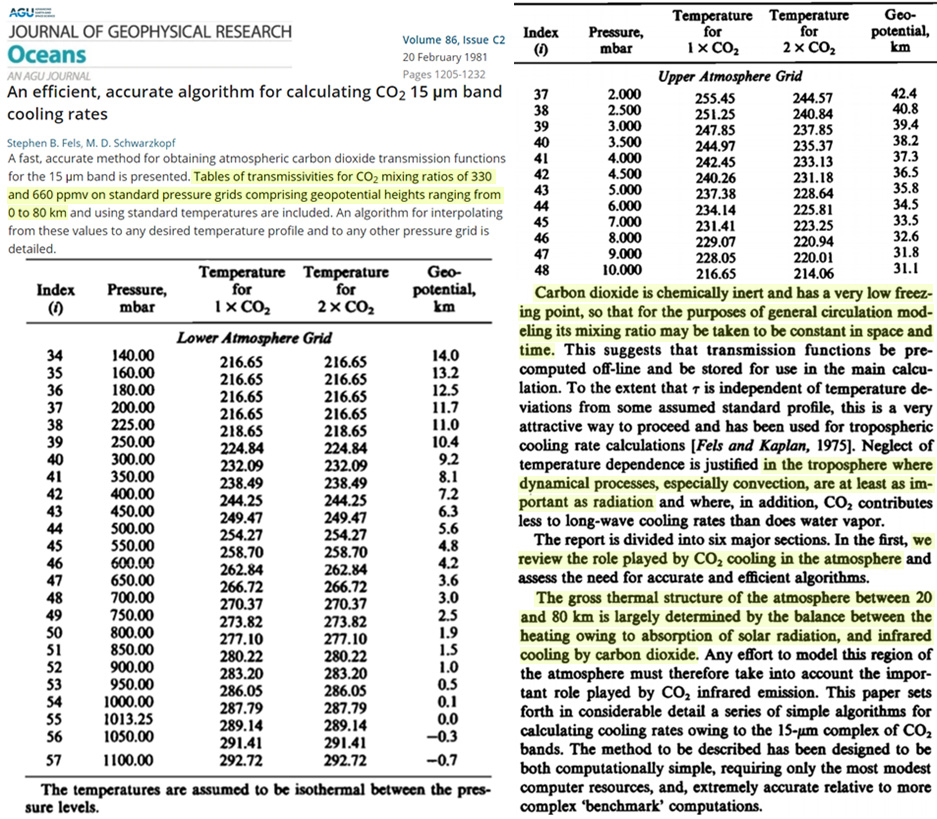
Image Source: Feis and Schwarzkopf, 1981
Interestingly, in this same paper CO2 was characterized as an “inert” gas. Further, the troposphere is where convection is “at least as important as radiation”.
CO2 does not have a radiative effect on more than 90% of the troposphere
Scientists have suggested the radiative properties of CO2 only affect 8% of the troposphere (Chilingar et al., 2008).
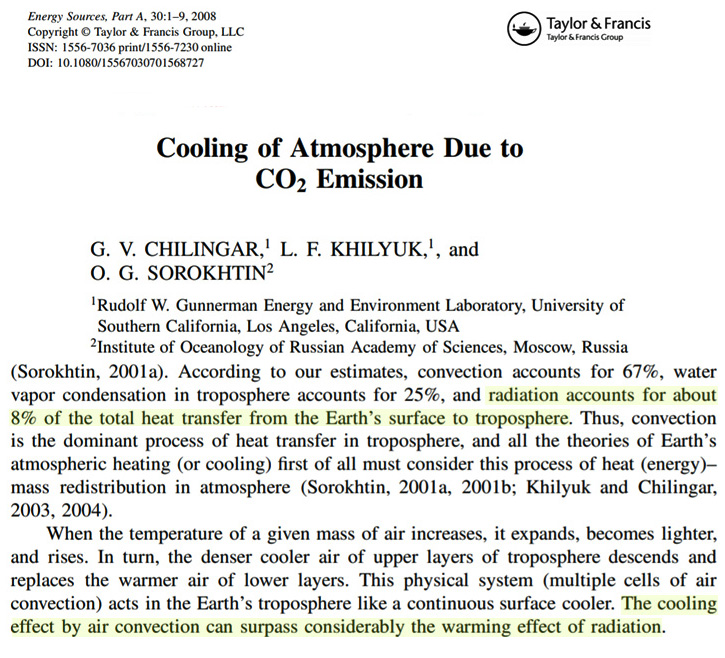
Image Source: Chilingar et al., 2008
The rest of the tropospheric CO2 impact is only convective, meaning that for up to 12 km above the Earth’s surface the main “warming” effect CO2 could realistically achieve would be no different than for an inert gas of a similar molecular weight, such as Argon.
A non-greenhouse gas suppresses heat loss just as much as CO2 does in observations
Argon is not a greenhouse gas, but in real-world experiments Argon and CO2 both reduce convective heat loss at the same rate and magnitude.
Physicists Seim and Olson (2020) found “near identical heating curves when we switch from air [0.04% CO2] to 100% CO2, or to Argon gas” in table top experiments.
As Wagoner et al. (2010) acknowledge in also emphasizing there is no difference between Argon and CO2’s convective capacity to “warm” air, “the magnitude of the radiative effect [of CO2] is more than an order of magnitude smaller [than its convective effect].”
And, again, this convective heat transfer effect predominates (>90%) in the troposphere.
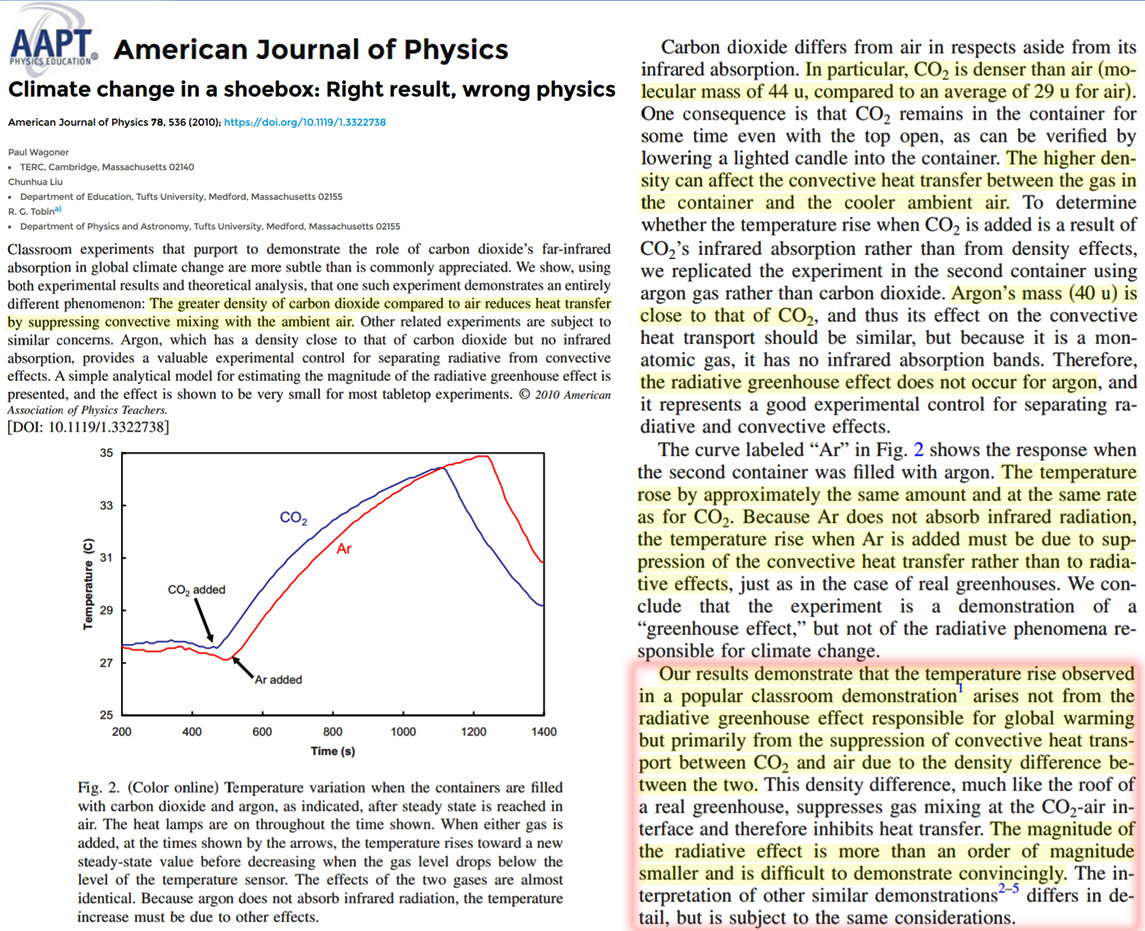
Image Source: Wagoner et al., 2010
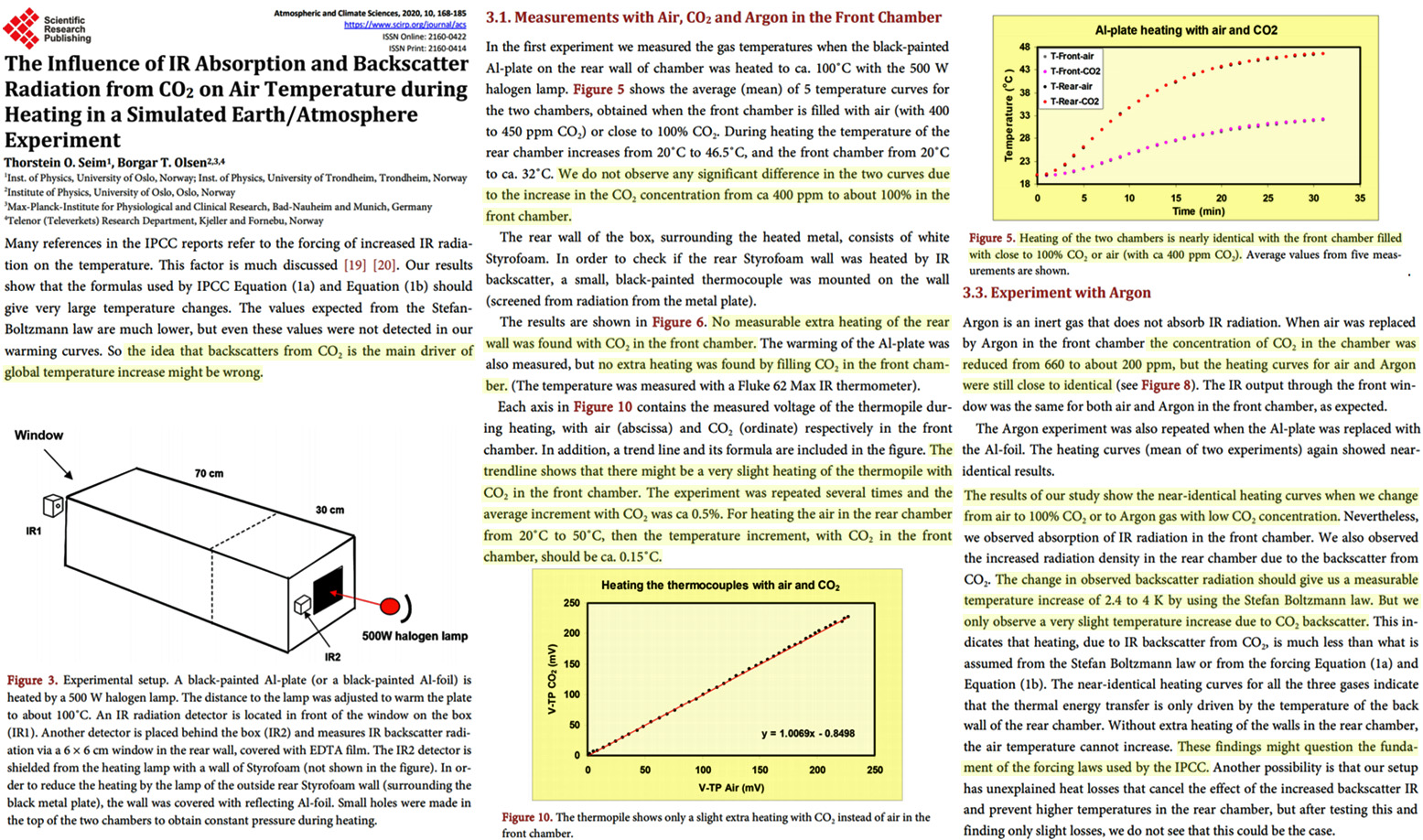
Image Source: Seim and Olson, 2020
CO2 radiatively cools the portion of the atmosphere that is…warming?
The proposed CO2-generated radiative cooling of the thermosphere leads to a rather curious inconsistency in modern-day “consensus” science.
The thermosphere is where the air gets warmer with height (Speight, 2017). So there is no “cooling to space” in this section of the atmosphere. Instead, it warms to space in the thermosphere.
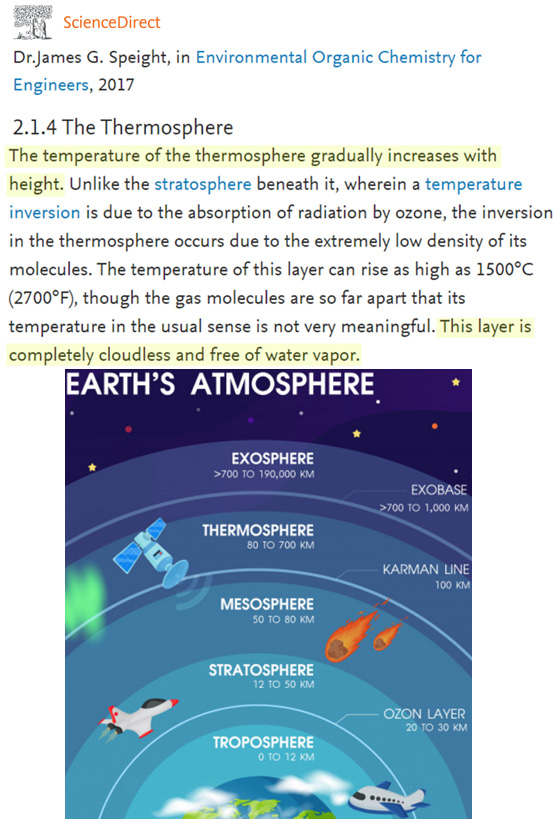
Image Source: Speight, 2017
This means that if CO2 is radiatively cooling the thermosphere, it is actually cooling the atmosphere where the atmosphere is warming (Mlynczak et al., 2016). This is the opposite of what is said to be occurring with the greenhouse effect in the troposphere.
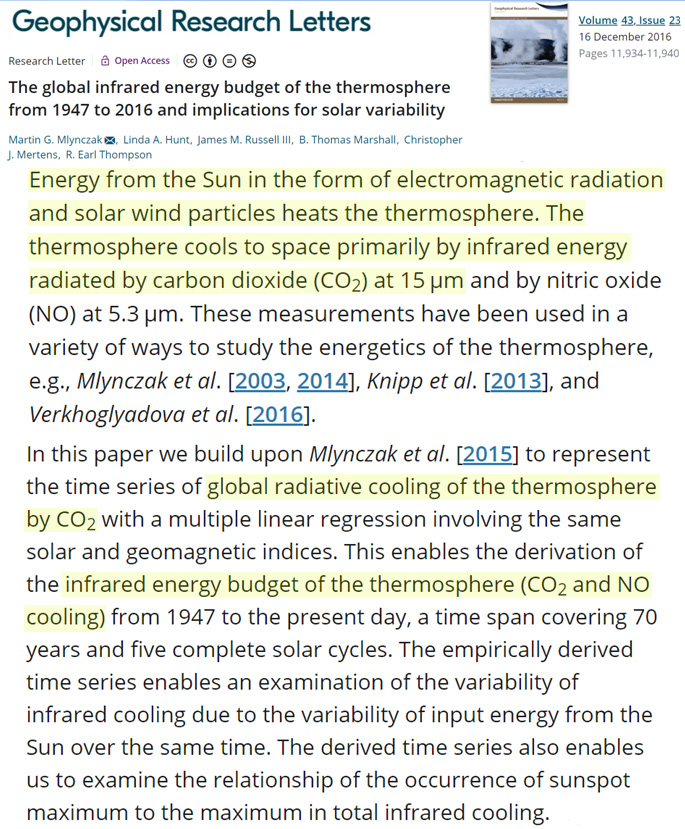
Image Source: Mlynczak et al., 2016
CO2 is sometimes a warming gas, and sometimes a cooling gas
Claiming CO2 can cool air that is warming and warm air that is cooling simultaneously would appear to be a rather dubious proposal.
But consider what happens at the surface in the real world. Over Hamburg, CO2 has been observed to drop from 403 to 377 ppm from winter to summer, or as mean surface temperatures fall by 19°C (Lightfoot and Mamer, 2018). Also from winter to summer, water vapor concentrations above Hamburg increase by 9,033 ppm.
This means that “from winter to summer the warming by water vapor counteracts the small cooling by CO2”. The opposite occurs from summer to winter: water vapor concentrations decline as CO2concentrations rise.
Thus, when comparing the CO2 effect to the water vapor effect, “the effects by CO2 each time are so small as to be negligible.”
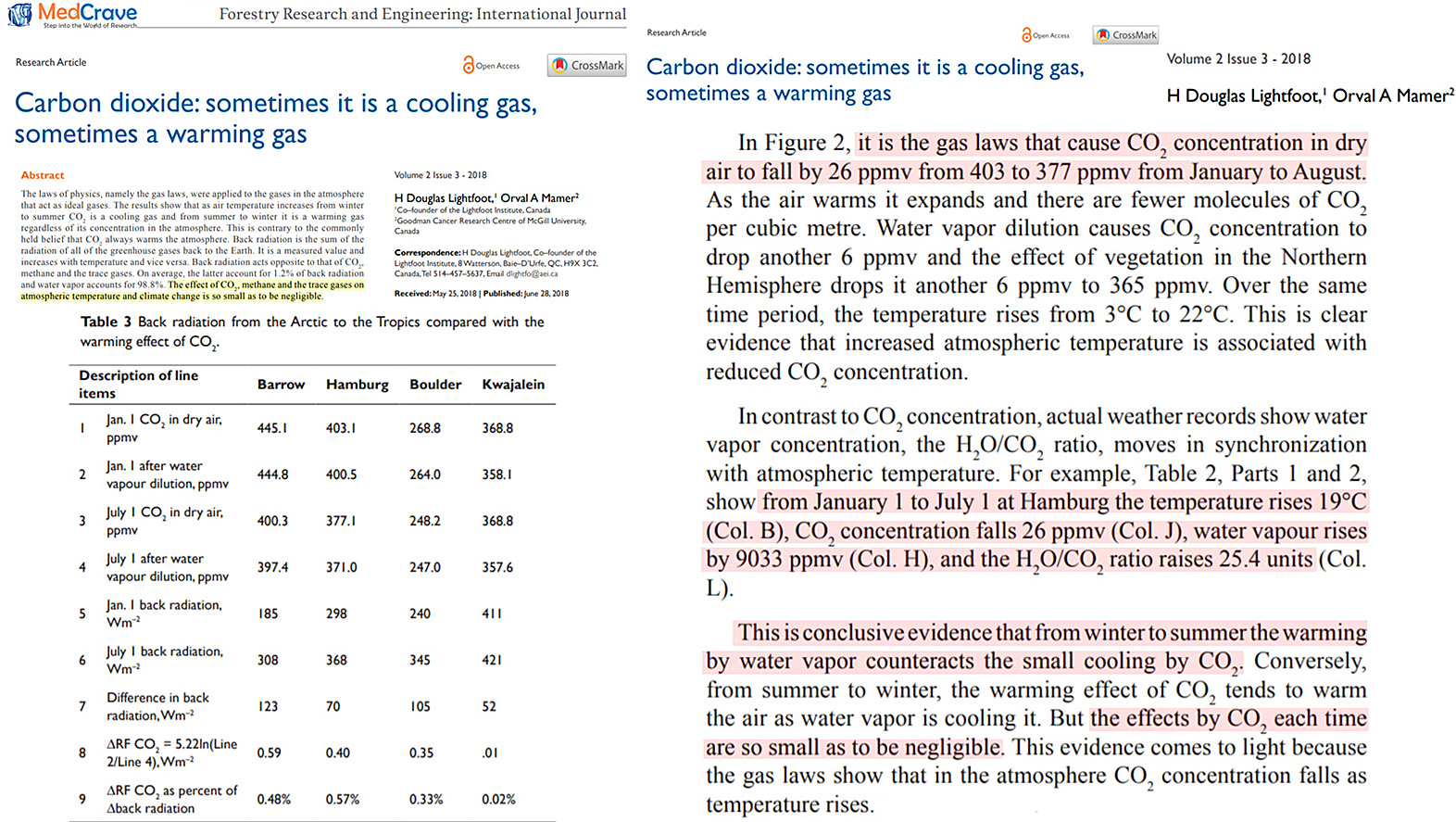
Image Source: Lightfoot and Mamer, 2018
“You can go outside and spit and have the same effect as doubling CO2”
To summarize, then, CO2 radiatively cools most of the atmosphere (from 30 km on up). CO2’s capacity to “warm” air is predominantly limited to its convective effect, which means a non-greenhouse gas can have about the same impact as CO2 does in most (>90%) of the troposphere. And CO2 is claimed to cool air where air is warming and warm air where air is cooling. Much of this just does not seem plausible.
Climate scientist Dr. Reid Bryson, who was at one time regarded as “the most frequently cited climatologist in the world,” was a prominent skeptic of global warming alarmism.
Before he died in 2008, Bryson compared CO2’s capacity to affect radiation to water vapor.
While acknowledging that 80% of the heat radiated back from the surface “is absorbed in the first 30 feet by water vapor, ” Bryson asserted that “eight hundredths of one percent” of this radiation is absorbed by CO2.
“You can go outside and spit and have the same effect as doubling carbon dioxide.”
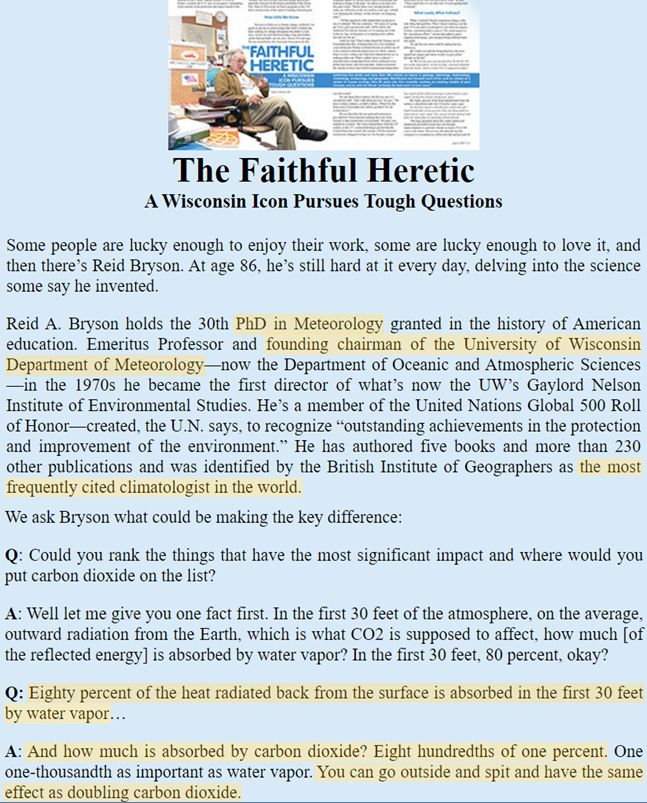





You force me to revise my estimate of ECS into the realm of the Luminiferous Aether.
I addressed this common incompetence of so-called “climate scientists” at the Tallbloke site just a few days ago, in a comment there:
tallbloke comment: NO radiation-forcings of the atmospheric temperature
I submit this comment also to deny the statement in the post above, that “the troposphere is where convection is “at least as important as radiation””
Let me be very blunt, very simple: The well-known tropospheric temperature lapse rate is THE ONLY governor of the global mean temperature, at any pressure level in the troposphere. And here is the money point, never to be forgotten: Neither radiation (as the “radiation transfer theory” believers assert) NOR convection are responsible for temperatures in the troposphere. The temperature lapse rate, the ONLY governor, is due to the pressure “lapse rate” with altitude (the pressure at any level is just the weight of the atmosphere above that level), AND THAT LAPSE rate is maintained by CONDUCTION (surprise, surprise, all you “experts”), that is, molecular collisions.
How long before my contributions, to fundamentally correcting the consensus “climate science” on a whole handful of basic — and should be obvious, once pointed out — understanding of ELEMENTARY PHYSICS.
I expect a few prizes (not Nobels, they are as corrupt as everything else now) after I’m dead. Of course, the free world will have to exterminate the criminals now in power, in both politics and science, too.
Again: CONDUCTION, due to the hydrostatic condition of the global atmosphere, is the governor of the global mean temperature, at any level in the troposphere. I proved this by precisely confirming the Standard Atmosphere (which is based on the hydrostatic condition) in my comparing of temperatures in that century-old model with the atmosphere of Venus (look up “Venus no greenhouse effect”).
The concept of global warming breaks down completely
Good work, but I have to point out that the title is wrong, because most of the atmosphere, at least by mole or by mass is below 6km, so co2 increses do nothing for most of the atmosphere. By volume of course you would be right.
😳 **embarrassment from making a typo while I tried to correct your science**
‘increases’